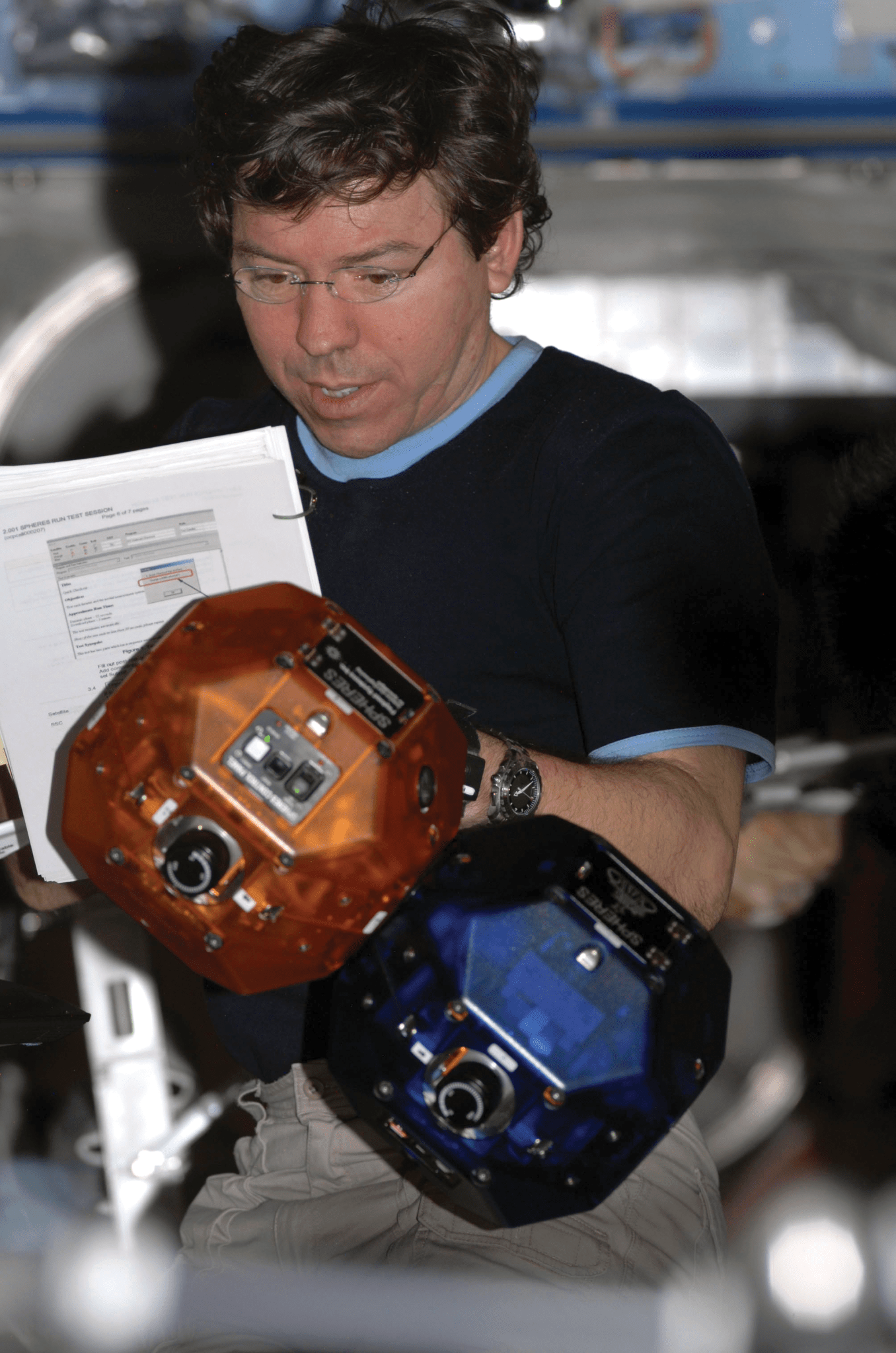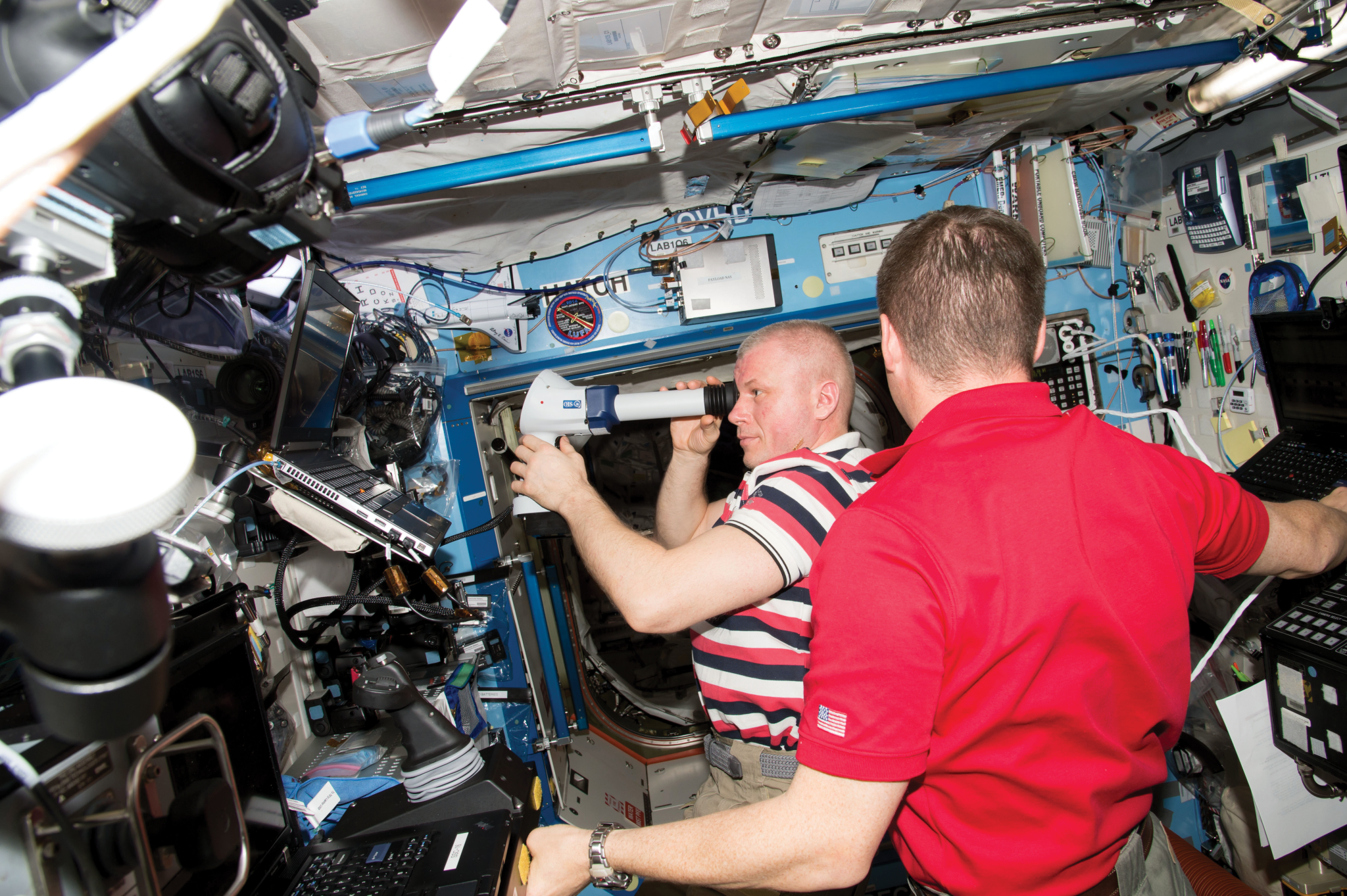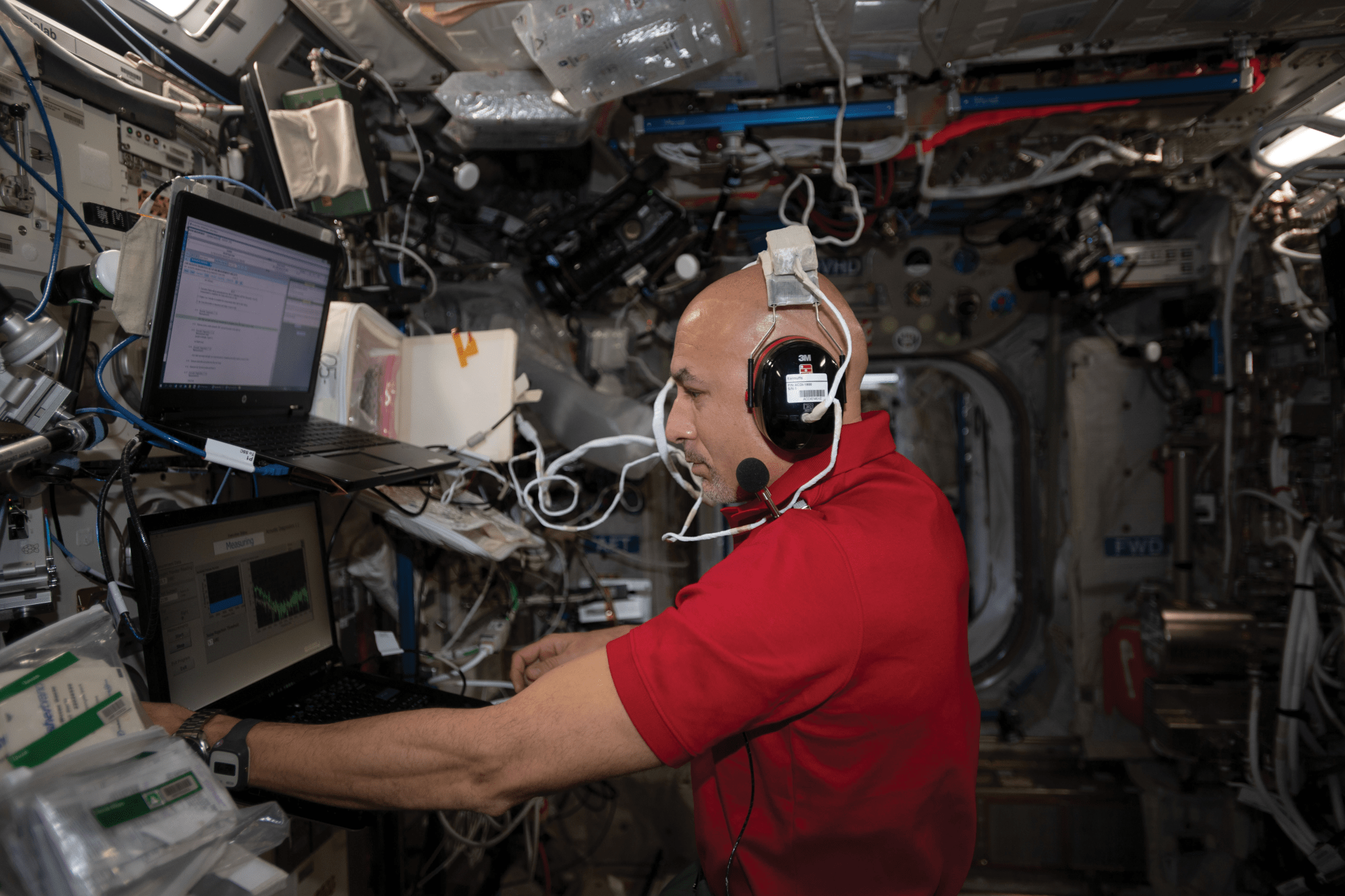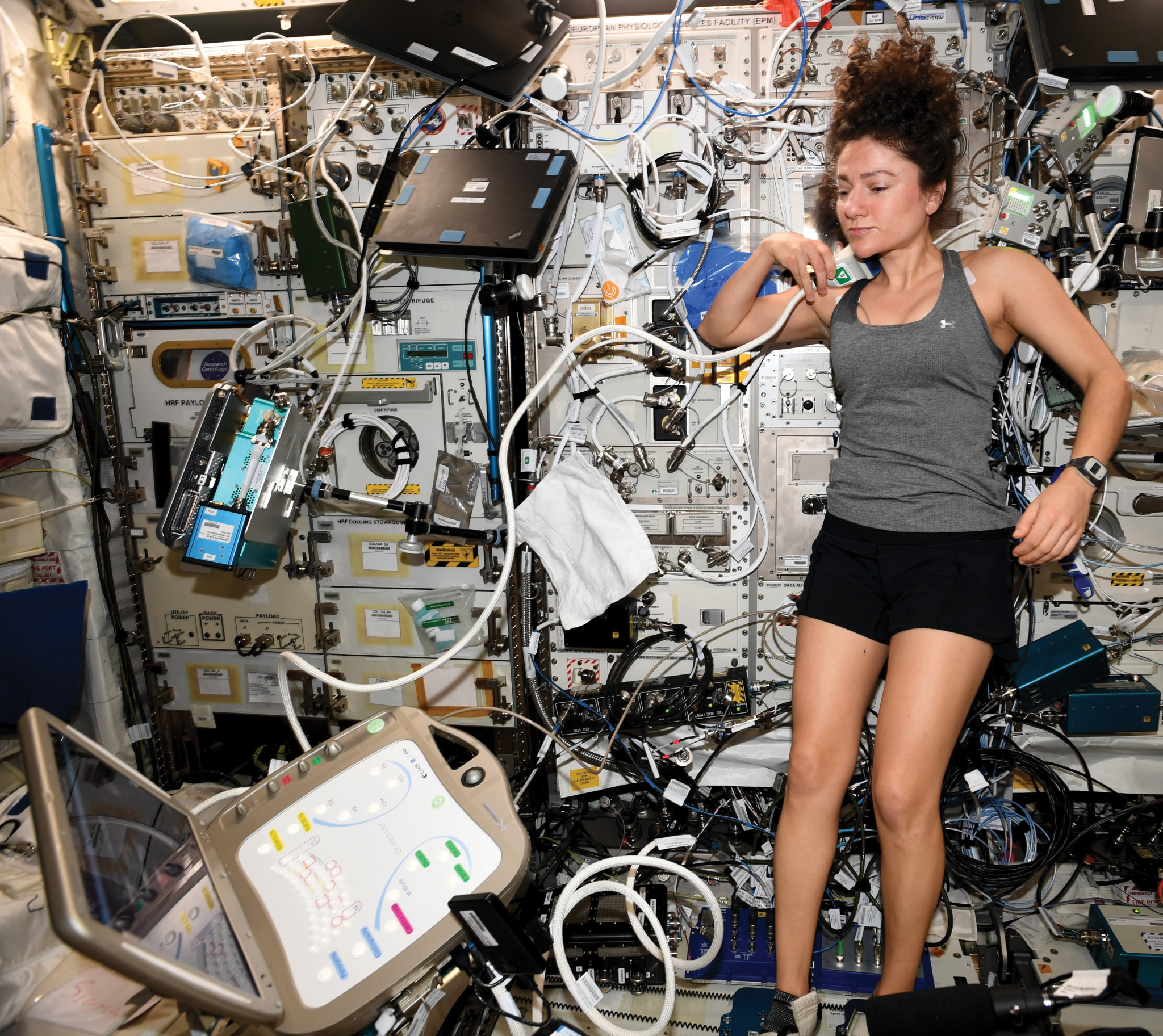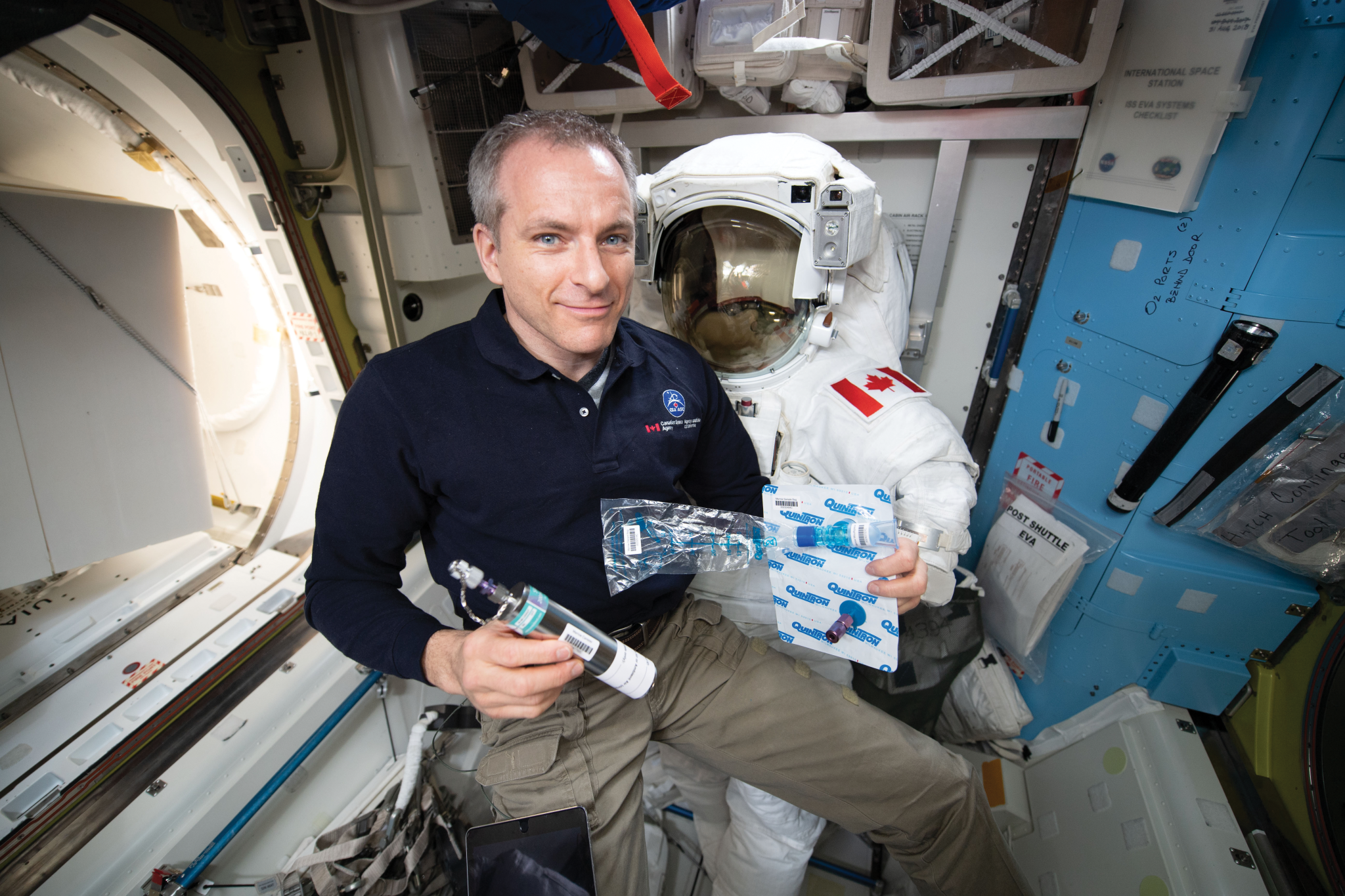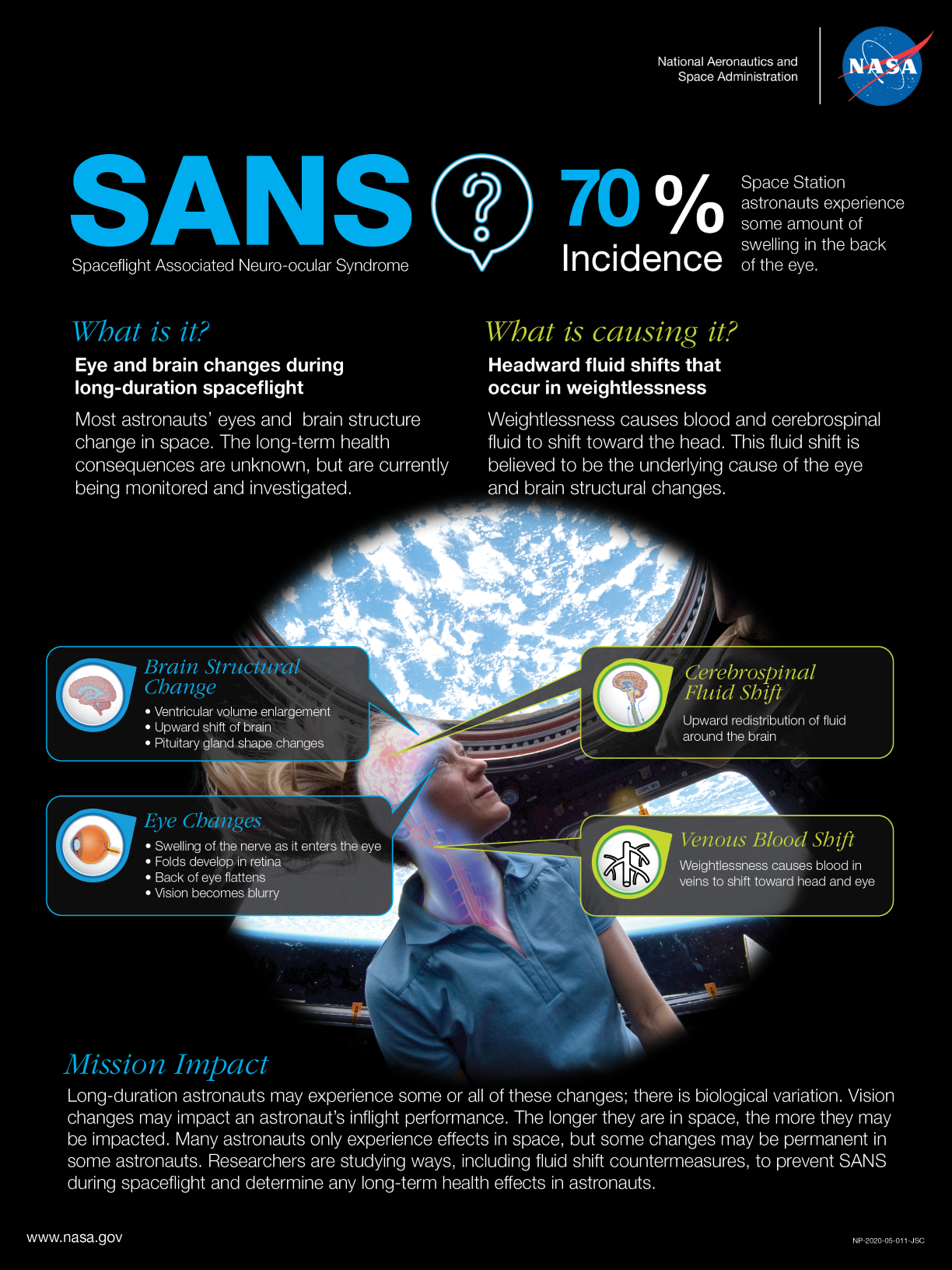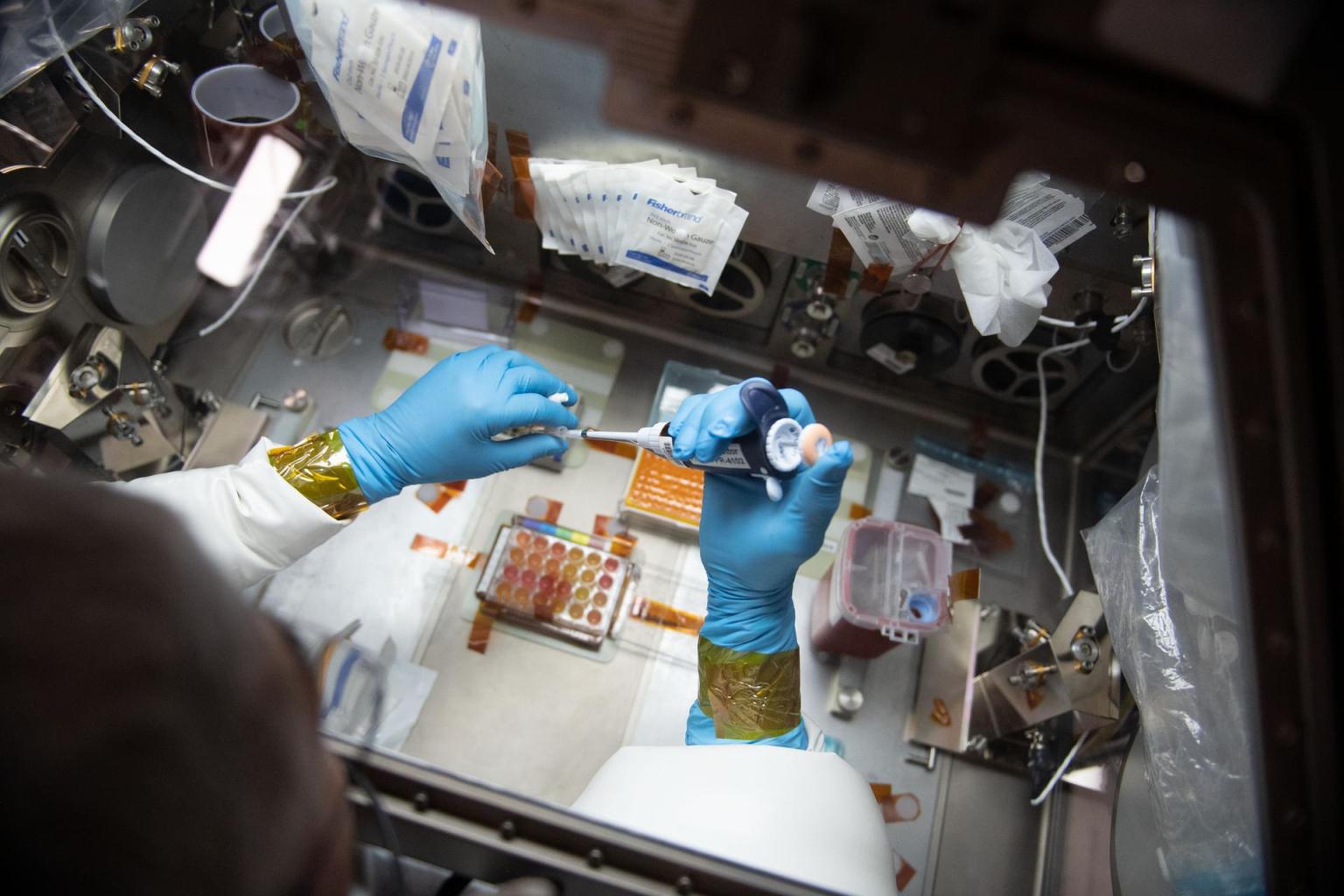NASA astronaut Michael Barratt flew a 6-month mission aboard the International Space Station in 2009. As the days went by, Barratt and fellow crew member Canadian Space Agency (CSA) astronaut Robert “Bob” Thirsk began having trouble reading the procedures for scientific research conducted on the orbiting lab. Slightly stronger pairs of glasses solved their problem, but the two, both physicians, decided to look deeper.
They found symptoms of what is now known as Spaceflight Associated Neuro-ocular Syndrome (SANS). Classic symptoms include swelling in the optic disc, which is where the optic nerve enters the retina, and flattening of the eye shape. When researchers looked back, they found certain aspects of SANS in even the earliest spaceflights.
More than 500 people have gone to space, but far fewer have stayed for long-duration missions. That makes data on astronauts like Barratt and Thirsk, and the changes their bodies go through, precious information. An astronaut’s body goes through a variety of adaptations to adjust to the unique environment of space.
“As soon as you get into the weightlessness, everything starts lifting up and you just feel this sensation. It is such an extraordinary feeling, and physiologically it feels like when you are hanging upside down on the monkey bars at the playground,” says NASA astronaut and physiologist Jessica Meir.
Monitoring SANS across station crew members has revealed that nearly 70% of them experience at least one of the hallmark signs, but with significant individual variability. Some crew members only experience these changes while in space, while some changes may be permanent for other astronauts.
Researchers now are studying the underlying causes and long-term health consequences of SANS and other neurological impacts to prepare for longer-duration missions. NASA’s Fluid Shifts investigation evaluated a lower-body negative pressure countermeasure system and measured the impact of headward fluid shifts in microgravity, a suspected contributing cause of SANS.
“The idea of embarking on a long-duration flight to Mars without having made this discovery is mind-boggling,” says Barratt.
Other studies, such as the ESA (European Space Agency) Neurospat and Circadian Rhythms studies, and the Italian Space Agency (ASI) Acoustic Diagnostics experiment, have explored other neurological effects of spaceflight. Neurospat recorded brain waves while astronauts completed tasks in a virtual reality environment to see if collected data backed up anecdotal astronaut reports of “space fog,” a generalized cognitive slowing during their initial time in space. Researchers report that relative to before flight, astronauts made more errors and were slower to respond inflight and post flight and can now work to develop countermeasures and strategies to mitigate these changes. The Circadian Rhythms investigation examined whether long-term spaceflight throws off circadian or daily rhythm in astronauts and studied the role of factors such as irregular light and dark cycles, microgravity-induced changes in body composition, and reduced physical activity. Acoustic Diagnostics monitors astronauts’ hearing health to determine whether there are adverse effects from noise and the microgravity environment of the space station.
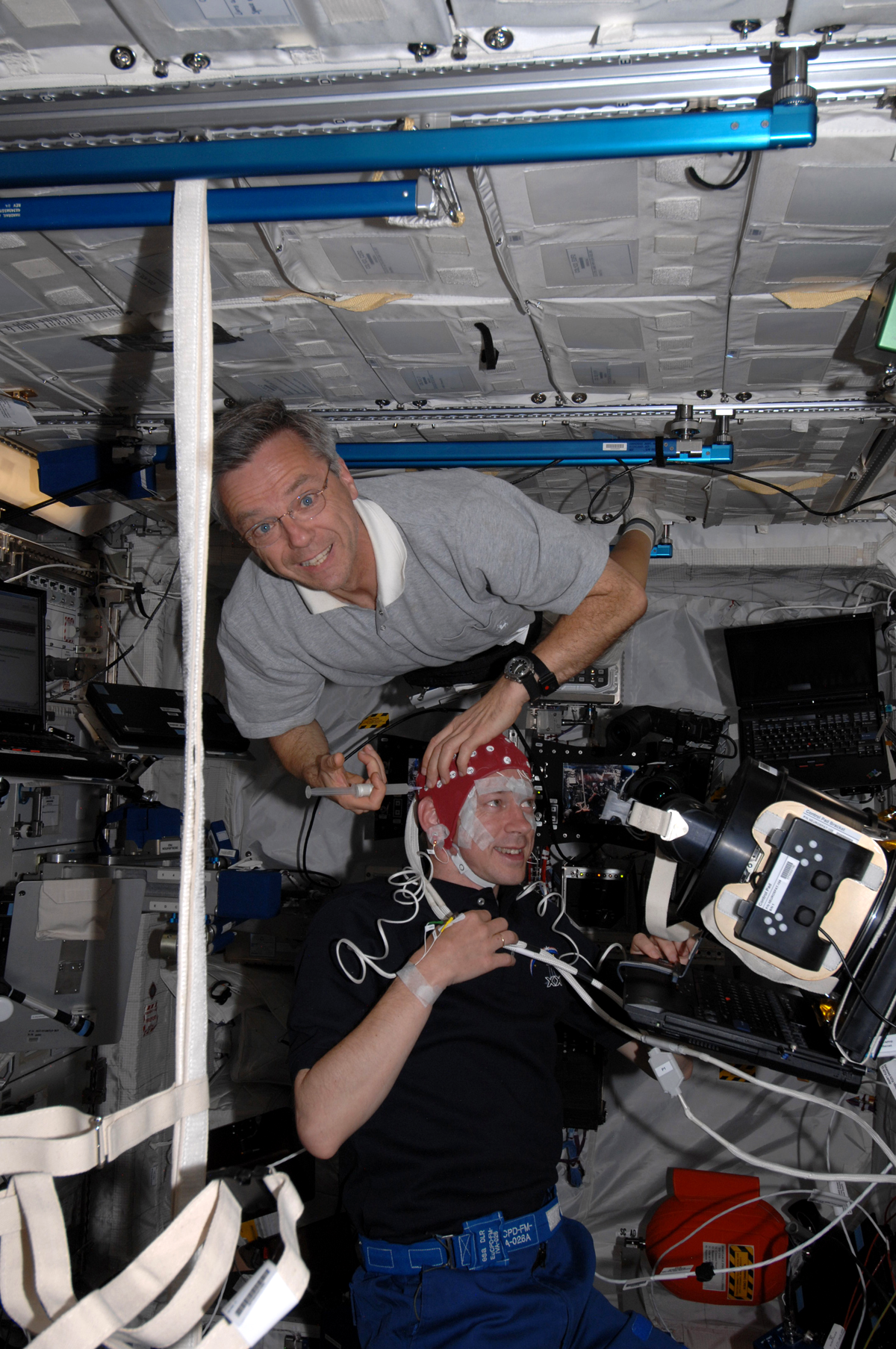
The State Space Corporation ROSCOSMOS (ROSCOSMOS) study Algometry explored how pain thresholds in astronauts change in space. Preliminary data suggest a possible increase in the threshold during spaceflight. These data contribute to the understanding of fundamental aspects of the occurrence of pain and could support the optimization of methods for providing pain relief in space and on Earth.
Many unknowns remain concerning how future crews will adapt on upcoming missions to the Moon and Mars. Some challenges of living on the space station for six months will be different from those experienced for three years on a Mars mission. NASA’s Human Research Program (HRP) has classified five major hazards to crew health summarized with the acronym RIDGE, short for Space Radiation, Isolation and Confinement, Distance from Earth, Gravity fields, and Hostile/Closed Environments.
“One of the biggest areas that we still need to understand more before we go further is how radiation affects the human body,” said Meir. “We undergo and receive more cosmic radiation even when we’re in the low-Earth orbit of the space station. When we go further, back to the Moon and to Mars, those levels will be even higher.”
One landmark human research project aboard the space station, NASA’s Twins Study, touched on numerous areas of astronaut health from cognition to fluid shifts to gene expression. The study brought together 10 research teams from around the United States to observe what changes could happen to a human from a year of exposure to spaceflight hazards.
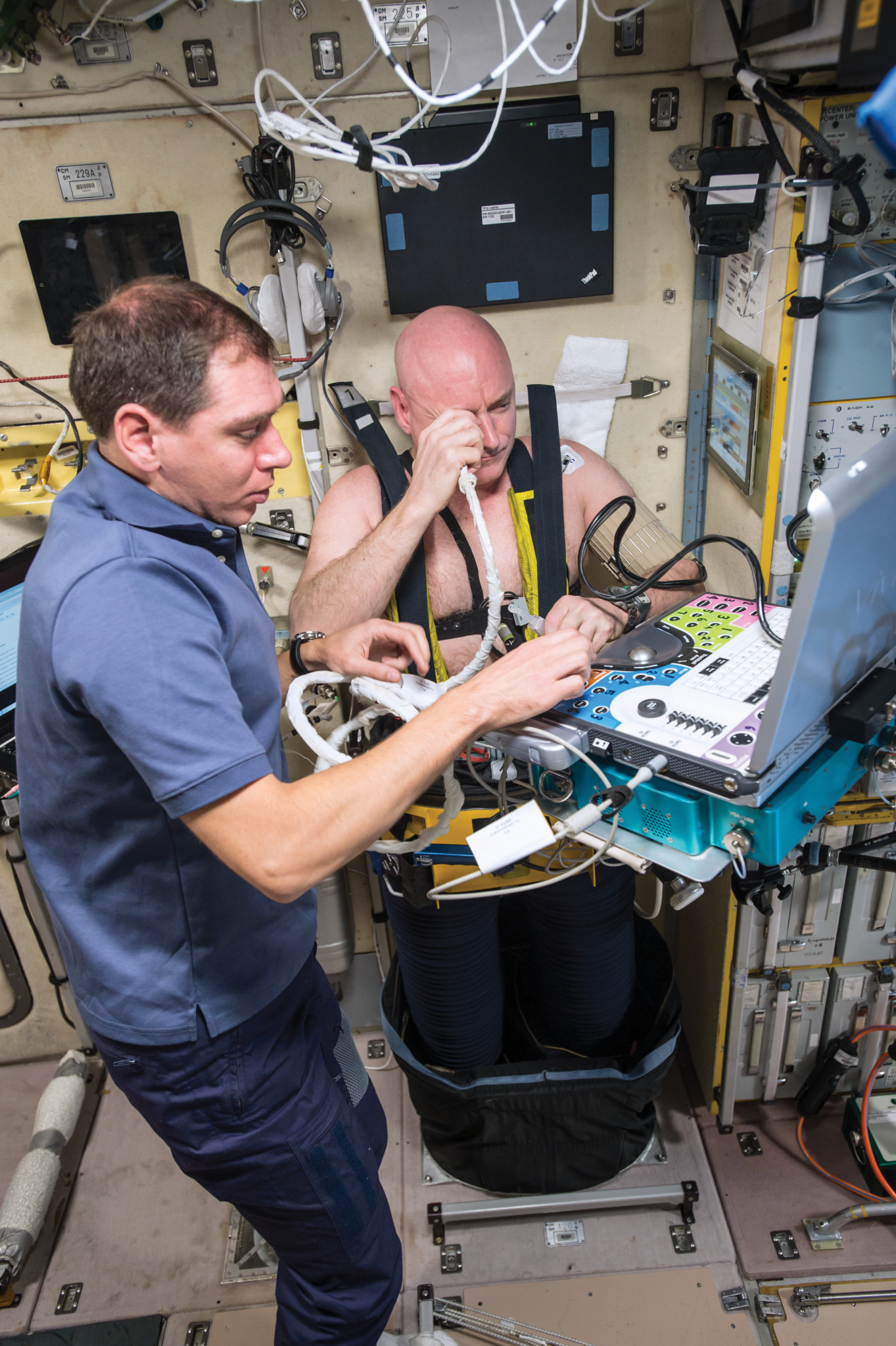
Results published in 2019 compared a wide range of samples and measurements from astronaut Scott Kelly (now retired), who spent nearly a year in orbit from 2015 to 2016, to those of his identical twin brother, retired astronaut Mark Kelly, who remained on Earth. Some of the results included:
- The observation of the lengthening of Scott’s telomeres, special features on the ends of each strand of DNA that typically shorten with age.
- Confirmation that Scott’s body reacted appropriately to a flu vaccine administered in space. This allows NASA to have greater confidence that the immune system responds appropriately in space should a vaccine be needed during long-duration missions.
- Data supporting minor changes in gene expression. Most of these changes reverted after Scott returned to Earth, but a small subset persisted after six months. These findings help demonstrate how a human body adapted to space.
Overall, the Twins Study demonstrated the resilience and robustness of how a human body can adapt to a multitude of changes created by the spaceflight environment.
Findings from the Twins Study may be used to develop new treatments and preventative measures for stress-related health risks on Earth. For example, telomere research may improve efforts to mitigate the effects of aging and disease, and protein research could have implications for studies on traumatic brain injury.
The microgravity environment also alters blood pressure control and vascular structures, which can have serious consequences for maintaining oxygenated blood flow to the brain and throughout the body. CSA has sponsored the Vascular, Vascular Echo, and Vascular Aging experiments to study vascular changes in astronauts with hopes of developing effective countermeasures to maintain astronaut health on future long-duration missions.
Data indicate that aging-like changes, including arterial thickening and stiffening, accelerate in many space station crew members. The most recent findings from advanced ultrasound studies of crew members also have shown increased wall thickness in the arteries.
“On Earth, people with type II diabetes have stiffer arteries because glucose stays elevated for a period of time after a meal, and that glucose then starts binding to proteins inside the artery wall and that causes an increase in stiffness,” said Richard Hughson from the University of Waterloo, Ontario.
Similar impacts of insulin resistance may contribute to the signs of vascular aging observed in otherwise healthy and fit crew members. Other potential explanations may involve calcium deposits associated with bone loss or even oxidative stress from radiation. Effects from both hazards were well documented in the Twins Study as well, and the Vascular Aging investigation continues to assess them. Uncovering the mechanisms behind these vascular changes may provide insights for developing interventions to slow aging and cardiovascular disease in older populations on Earth.
Results from another CSA study, MARROW, indicate that microgravity is a primary contributor to reduced red blood cell (RBC) count in astronauts, known as space anemia. The researchers found higher numbers of RBCs were eliminated in space than on Earth, and this change persisted throughout the duration of the space mission. Longer exposure to spaceflight appeared to worsen the condition. Elimination of RBCs sharply decreased upon astronauts’ return to Earth. These findings may improve the health monitoring of astronauts and development of countermeasures to ensure safer space exploration.
Cardiovector, ROSCOSMOS’ investigation, focused on blood pressure and propagation of the pressure waves within the aorta as another aspect of cardiovascular health in station crew. The data show consistent pulse wave propagation both in microgravity and in pre- and post-flight testing.
Continuing to study and understand how these stressors affect the human body is necessary to ensure astronaut health and performance for missions beyond low-Earth orbit.
“We are not only studying low-Earth orbit to understand it. We are studying low-Earth orbit as an analog for the Moon and Mars,” said HRP chief scientist Steven Platts.
These human research efforts and many other future-facing projects all enhance life on Earth and beyond. Understanding the human component of human space exploration is paving the way forward to push to new limits and venture farther into space than ever before.



























